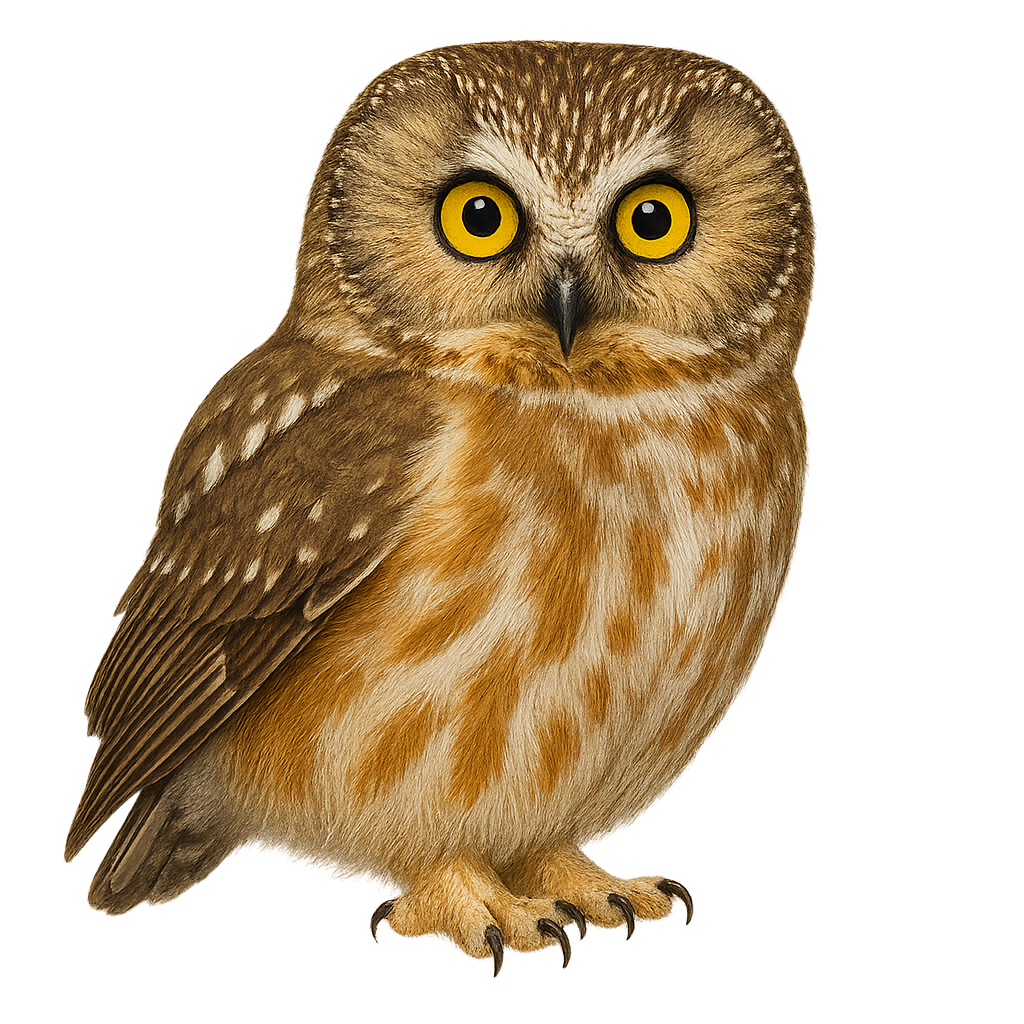Your wildlife photography guide.
Explore the northern saw-whet owl in detail, study its behavior, prepare your shots.
Where to observe and photograph the northern saw-whet owl in the wild
Learn where and when to spot the northern saw-whet owl in the wild, how to identify the species based on distinctive features, and what natural environments it inhabits. The WildlifePhotographer app offers tailored photography tips that reflect the northern saw-whet owl’s behavior, helping you capture better wildlife images. Explore the full species profile for key information including description, habitat, active periods, and approach techniques.
Northern Saw-whet Owl
Scientific name: Aegolius acadicus

IUCN Status: Least Concern
Family: STRIGIDAE
Group: Birds
Sensitivity to human approach: Suspicious
Minimum approach distance: 10 m
Courtship display: March to April
Incubation: 26-32 jours
Hatchings: April to June
Habitat:
coniferous forests, mixed forests
Activity period :
Mainly active at night, generally discreet during the day.
Identification and description:
The Northern Saw-whet Owl, Aegolius acadicus, is a small owl in the Strigidae family. It measures about 18 to 21 cm in length with a wingspan of 42 to 56 cm. Its plumage is brown with white spots on the belly and a pale face surrounded by a distinctive facial disk. Primarily nocturnal, it feeds on small mammals, birds, and insects. It inhabits coniferous and mixed forests across North America, from southern Canada to the northern United States. Though elusive and hard to spot, its soft, repetitive call is often heard during the breeding season.
Recommended lens:
400mm – adjust based on distance, desired framing (portrait or habitat), and approach conditions.
Photography tips:
To photograph the Northern Saw-whet Owl, focus on twilight or nighttime hours, as it is primarily active at night. Use a 400mm or longer telephoto lens to capture detailed images from a distance without disturbing it. Look for dense forest habitats where it is likely to perch. Be patient and attentive to its distinctive call to locate its presence. Ensure you maintain a safe distance of at least 10 m to minimize stress on the bird.
The WildlifePhotographer App is coming soon!
Be the first to explore the best nature spots, track rutting seasons, log your observations, and observe more wildlife.
Already 1 432 wildlife lovers subscribed worldwide

